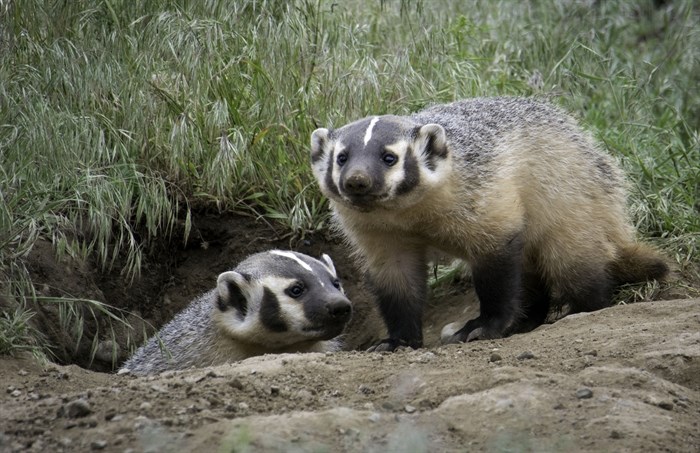
FILE PHOTO - The American Badger
Image Credit: PIXABAY
January 22, 2021 - 5:03 PM
An action plan for Okanagan governments and land owners will soon be made available to protect a wildlife corridor that spans between two regional parks.
Scott Boswell program manager with the Okanagan Collaborative Conservation Program said the program is a partnership with about 40 organizations that include governments, non-profits, First Nations and researchers to protect nature in the Okanagan Valley.
Their ongoing project, to establish a wildlife corridor that stretches for 65 kilometres between Okanagan Mountain Provincial Park near Kelowna and Kalamalka Lake Provincial Park near Vernon has been ongoing for roughly seven years. By the end of 2021, the group is hoping to complete an action plan identifying key items that municipalities, regional districts and landowners can do to preserve the landscape.
Initial research for the wildlife corridor began with the Regional District of the Central Okanagan and researchers at UBC Okanagan and the corridor was identified as a key area because “of the tremendous development pressure that it was under,” Boswell said.
The Central Okanagan had a population of 194,882 people and is the fourth largest regional district in B.C. The regional district is expected to outpace provincial population growth between 2018 and 2026, a net growth of 32,000 people with an average growth rate of 1.6% a year, according to the Central Okanagan Economic Development Commission.
The proposed wildlife corridor is home to a grassland, Douglas fir and ponderosa pine ecosystem, he said.
“What we want to ensure in the future is that those parks don’t become isolated because we put a lot of resources into having these parks (to) maintain their wildlife value,” Boswell said.
Animals like American badger, mule deer and elk need that landscape and space to be able to travel.
“It’s not just a migration corridor, it’s about maintaining habitat that’s there so species can thrive and move through that area if they have to,” Boswell said
As ecosystems and temperature changes with climate change, these animals will need space to move and adapt.
This corridor is only part of a larger one that runs all the way to Washington State, he said. The project connects with two cross-border ecological corridor projects, the Yellowstone to Yukon Conservation Initiative, running from Yellowstone National Park to the Yukon and the Sagelands Heritage Program which runs from the Okanagan to Oregon.
“We want to make sure there’s habitat connectivity through that whole corridor,” Boswell said.
The District of Lake Country has already included a 16 km section for the wildlife corridor in its official community plan which was updated last year. The City of Kelowna also incorporated guidelines and mapping in its new Official Community Plan draft. An additional secondary corridor connecting Knox Mountain to the main corridor through Glenmore in Kelowna was also included in the City’s draft OCP.
For more information on the wildlife corridor, visit the conservation program's website here.
To contact a reporter for this story, email Carli Berry or call 250-864-7494 or email the editor. You can also submit photos, videos or news tips to the newsroom and be entered to win a monthly prize draw.
We welcome your comments and opinions on our stories but play nice. We won't censor or delete comments unless they contain off-topic statements or links, unnecessary vulgarity, false facts, spam or obviously fake profiles. If you have any concerns about what you see in comments, email the editor in the link above.
News from © iNFOnews, 2021